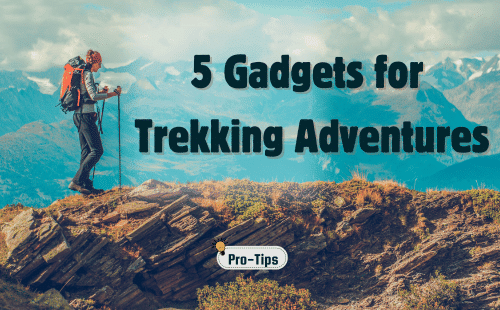As a freelance blogger constantly trying to grow my site’s traffic, I’m always researching the latest techniques to improve SEO and rankings. Optimizing WordPress sites brings its own challenges with hundreds of settings to tweak for better indexing. It can get overwhelming!
In this article, I’ll share key SEO tips for WordPress based on first-hand experience growing multiple sites to over 100,000 monthly visitors. I used the same core best practices across blogs, small business websites, and online stores built with WordPress over the past 5 years.
Whether you just launched a new WP site or have an underperforming blog, these SEO tricks will help take your WordPress SEO to the next level!

Must-Have WordPress SEO Plugins
While WordPress comes SEO-ready out of the box, plugins extend its capabilities for properly optimizing content and site architecture. Here are go-to tools I install on every WP site:
- Yoast SEO – The top WordPress SEO plugin for optimizing title tags, meta descriptions, alt text and more. I love Yoast for its readability analysis and XML sitemaps.
- Rank Math – A rising star, Rank Math provides Yoast-level SEO tools for free in its basic version. I use it alongside Yoast for richer Schema markup.
- SEOPress PRO – Going beyond the basics, SEOPress lets you fine-tune site architecture with XML sitemaps, better URLs, local SEO, redirects and integrations with analytics.
I rotate between the 3 based on client site needs, but having any installed will boost your basic WordPress SEO foundation.
Here is an expanded version with each tip as a header and descriptive details:
Conduct Keyword Research to Find Low Competition Long-Tail Keywords
Keyword research is the foundation of understanding what search terms people are actually using related to your content and offerings. Rather than guessing, tools like Google’s Keyword Planner reveal the best targets:

Google’s Keyword Planner provides detailed search volume data and competition levels for keywords. Utilize its filters to identify more long-tail keywords with lower competition that align with your niche. Targeting these less optimized phrases can help content rank faster compared going after only the most popular over-saturated terms.
Ubersuggest – A free alternative keyword tool by top SEO expert Neil Patel, Ubersuggest generates extensive suggestions and provides useful top content/competitor analysis for target keywords. The filters here also help drill down into low-hanging-fruit keywords.
Taking time upfront for thorough keyword research pays off dramatically by revealing highly relevant search terms otherwise missed. The most lucrative targets have enough search volume for traffic potential but are ignored or under-optimized by sites currently ranking. Content optimized for these terms can ascend quickly with the right focus.
Strategically Optimize Pages for 1-2 Primary Keywords
While conducting wider keyword research helps piece together topical clusters and user intent, each individual page or post should hone in on optimizing for just 1-2 main target phrases. These primary keywords will dictate on-page optimization:
🚀Title Tags – Place primary keyword (and variations) at beginning. Include secondary keywords where possible. Keep under 60 characters.
🚀 URL Slug – Keywords should appear in the URL for increased relevance signals.
🚀 Image File Names – Naming images based on keywords targeted on that page improves contextual relevance.
🚀 Content – Use keywords naturally in first paragraph. Aim for 1-3% keyword density overall – avoid over-optimization!
The goal is to laser focus each page on excelling for its core keyword targets through strategic title tags, URL, media names while avoiding awkwardly over-stuffing content with keywords. On-page SEO is a balancing act between optimization relevance and compelling readable content.
Include Long-Tail Keyword Variations in Content
While each page targets primary keywords, related long-tail variations help expand relevance to multiple searches. These more specific multi-word phrases reveal more context for broader topics so should be included as secondary targets.
For example, a post about meditation could optimize for “benefits of meditation” as the main keyword but also incorporate longer variations like:
- benefits of meditation for anxiety
- types of meditation for beginners
- guided meditation for sleep
Not only do these long-tail keywords attract more targeted visitors, Google likes to see comprehensive content. Optimizing for closely related keyword clusters leads to better page rankings across all those searches. Expand your topical authority through long-form content optimized for primary keywords and extended variations.
Revive Evergreen Content to Increase Overall Site Keywords
Many site owners focus mostly on publishing new content to build rankings. But recall that existing popular posts already have authority in search engines. Updating evergreen content with new stats, tools, trends etc keeps them relevant for the latest keyword searches.
Set a content audit and refresh schedule to maximize the SEO-potential across your site. Target outdated posts that cover topics users continually search for. Update any broken links, expired offers/stats or interface screenshots. Expand sections that feel too brief.
This content revival strategy essentially retargets existing authority pages for new keywords without starting from scratch. The search rankings of established pages then pass down enhanced relevance to new terms thanks to your updates surfacing what’s current. Add 10-20% new content during refresh cycles to increase overall keywords.
Distribute Authority Links Across Key Content
Internal linking allows sites to transfer page authority and rankings power between connected pages. Links essentially vote for the value of other pages. Strategic cross-linking supports lower-performing targets pages by lending them link credibility.
Analyze your content structure to identify established high-value pages around key topics. Then judiciously insert contextual internal links pointing visitors to related content that needs a visibility boost. Embed links on keywords relevant to the destination page rather than generic phrases like “click here”.
When designing content hubs or attempting to rank newer posts, strategic authority linking provides a legal way to accelerate page rankings compared to acquiring backlinks which takes more time and trust-building. Review analytics to determine connections that traffic prefers then formalize paths with contextual internal links.
Implement Schema Markup for Richer Snippets
Schema markup enables adding code to pages to classify key data like people, products, businesses etc This structured data makes content more visible in rich snippet search results, featured carousels, voice answers and more.
Popular Schema types to enhance WordPress sites include:
🚀 Recipe markup – Better highlight ingredients, cook time etc
🚀 How-to markup – Outline steps for tutorials
🚀 FAQ markup – Improve question/answer visibility
🚀 Event markup – Share details on occasions
🚀 Review markup – Highlight product/service reviews
Both Rank Math and Yoast SEO plugins provide intuitive UIs for implementing various Schema types without needing code skills. The more semantic structure added, the more eye-catching elements search crawlers extract for indexing based on the topic.
Utilize Keyword-Focused Alt Text on Images
Images naturally attract more user attention but also offer optimization potential based on filenames and alt text descriptors. Any graphics, infographics, photos etc should include alt text expanding on their context for search bots.
When uploading images or placing them in posts, take advantage by adding alt text focused on primary or secondary keywords targeted on that page. Avoid overly generic phrases like “graphic” or “screenshot”. Instead summarize the image purpose featuring main keyword targets.
With the growth of visual search, descriptive and keyword-focused alt text provides another signal reinforcing page relevance. Images without alt text also negatively impact accessibility and site performance. Craft alt descriptions the way users would ask about the image rather than blunt captions.
The Balancing Act of Readability Over Optimization
After going through intensive keyword research and analysis to shape content, it can be tempting to over-optimize pages to forcibly rank for as many terms as possible. However, Google’s algorithms highly prioritize engaging, naturally flowing content focused on serving the user first.

Avoid awkwardly over-stuffing pages with keywords simply to game search engines rather than inform visitors. Readability and UX factors into rankings now as much as raw optimization actions. Focus first on creating content for site visitors – not just bots. The keywords should develop naturally from producing valuable resources around popular topics.
Check that pages read smoothly and bring value on the subject first before tweaking to fit in additional target keywords. Optimization should align with great content instead of undermining readability in exchange for a few extra keyword placements. Prioritizing user experience wins long-term trust while stuffing pages feels thin or robotic.
Tread carefully during optimization to avoid crossing over into keyword stuffing which can trigger penalties. Google cares about comprehension and intent – not just seeing keywords repeated excessively. Feel each page provides genuine value for visitors rather than a vehicle packed with keywords not contributing to topic value.
The best part about optimizing WordPress sites is much of it also improves user experience. Fast load times, compelling content and helpful navigation aids readers as much as bots!
Keep SEO Factors Front of Mind
Learning never stops when you manage an active website. WordPress offers such diversity to continually experiment with new tactics and tools tailored to your evolving model and goals.
Whether setting up an online store, creating a content hub or building a local business site, use this post as guideline for implementing SEO best practices from day one. Keep search optimization front of mind as you publish new content, add functionality through plugins or analyze site metrics.







